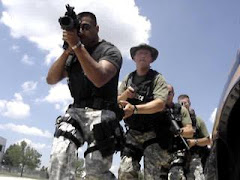Modeling is a term that I first heard used in this context by personal development expert Anthony Robbins. Robbins uses the term as a "Western explanation" to conceptualize what has, for centuries, been stand practice in the dojo ("Training Hall")(Pauley, 2009, p. 20).
As a primary means of teaching in the dojo, one's sensei ("Teacher")(Pauley, 2009, p. 145) demonstrates movement, be it kata ("Prearranged Pattern")(p. 76) or waza ("Drill")(p.194). Students are discouraged from intellectualizing to learn and encouraged, instead, to imitate the movement exactly in order to "feel its flavor". Robbins uses the term "modeling" to describe this process of learning. One may characterize the intent to be the discouraging of analytical learning in favor of experiential learning.
Since Robbins has articulated this so well, we can simply summarize his work on the matter. In his personal development program, Robbins states that "motion creates emotion". He uses the example that if one were to describe an individual as being depressed to someone who did not know that individual, that person would still have an idea of the physiology of the depressed individual - a fairly accurate assessment of posture, gait, cadence of speech, breathing, use of eye contact, etc. This is because there is a particular physical ritual that must be modeled in order to create/convey depression (or excitement or any other state of being)(Robbins).
Robbins then proposes what martial arts training has been doing for centuries: if one changes ones physiology, one can alter one's psychology. Robbins has his students physically smile while attempting to recall an event that makes them feel poorly. It is obviously not possible to do both. In this way he illustrates the overwhelming impact of physical ritual on one's state of mind and, ultimately, quality of life (Robbins).
Returning our thoughts to the dojo, the emphasis on posture, breath, cadence of step, etc take on a significance beyond the goshin jutsu ("self-defense")(Pauley, 2009, p. 31) training. It is the process by which a physical "ritual" anchors a psychological state. The state of mind (perhaps heart is a more accurate word) that it creates can be described as empowerment in the face of adversity. This is a key process that contributes to creating a positive impact in the "non-dojo" activities in one's life as well.
Have you ever questioned the cliches that state martial arts will make you a better academic student, get you promoted at work and make you more attractive to the opposite sex? Modeling and the subsequent states that result from the "motion and emotion connection" is the process by which success in martial arts extrapolates into success in all areas of life.
There is a catch, however, and that is being selective in your choice of who to model. The better understanding that both teachers and students have of this process and connection, the greater the impact of this strategy.
Below is a video that I encourage you to watch as well as a link to visit the Robbins website.
Respectfully,
David
Director, Midwest Academy of Martial Arts
References
Pauley, Dan C. "Pauley's Guide: A Dictionary of Japanese Martial Arts and Culture". 2009. Anaguma Seizan Publication.
Robbins, Anthony. "Personal Power II: The Driving Force". compact disc.
http://tonyrobbinstraining.com/date/2009/06/
http://www.tonyrobbins.com/





No comments:
Post a Comment